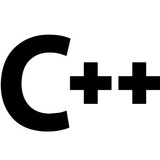tg-me.com/cpp_geek/323
Last Update:
Пару фишек про шаблоны, которые могут спасти час дебага:
1. CTAD (Class Template Argument Deduction, C++17)
Не надо вручную указывать аргументы:
std::pair p(42, 3.14); // вместо std::pair<int, double> p(42, 3.14);
std::vector v = {1,2,3}; // компилятор сам выведет std::vector<int>
Помогает сократить код и избежать опечаток.
2. Fold-выражения (C++17) для арг-паков:
auto sum = [](auto... args){
return (args + ...); // ((a + b) + c) + ...
};
std::cout << sum(1,2,3,4); // 10
Позволяют писать операции над любым числом параметров без рекурсии.
3. SFINAE → Concepts (C++20)
Старый стиль через
enable_if легко сломать:
template<class T>
std::enable_if_t<std::is_integral_v<T>, T>
foo(T x) { return x*2; }
С Concepts чище и понятнее:
template<std::integral T>
T foo(T x) { return x*2; }
4. CRTP (Static polymorphism)
Быстрее виртуалок и без RTTI:
template<class D>
struct Base {
void interface() { static_cast<D*>(this)->impl(); }
};
struct Derived : Base<Derived> {
void impl() { std::cout<<"OK\n"; }
};
Шаблоны — это не только про универсальность, но и про ясность кода. Освой тонкости, и они станут 🔧, а не головняком.
➡️ @cpp_geek
BY C++ geek
Warning: Undefined variable $i in /var/www/tg-me/post.php on line 283
Share with your friend now:
tg-me.com/cpp_geek/323
